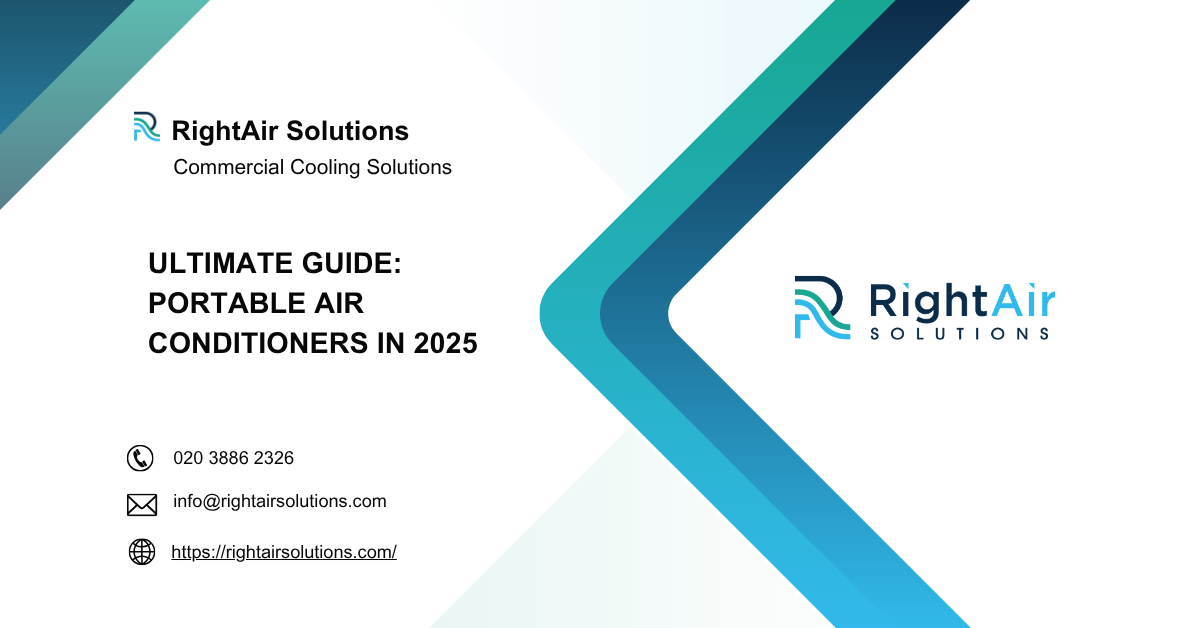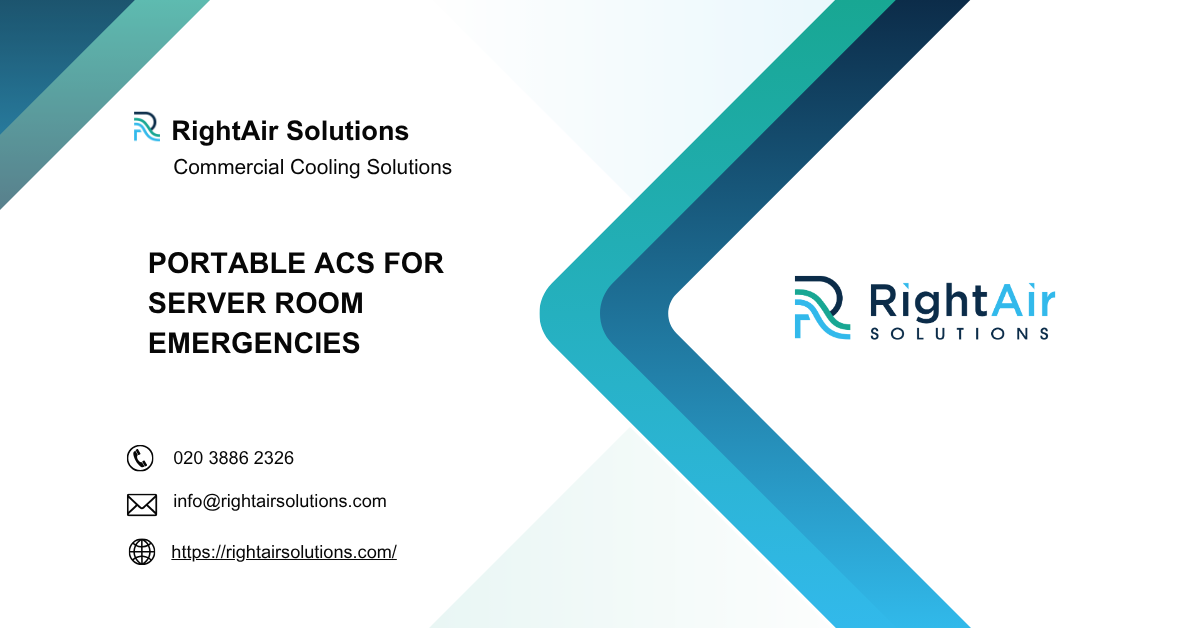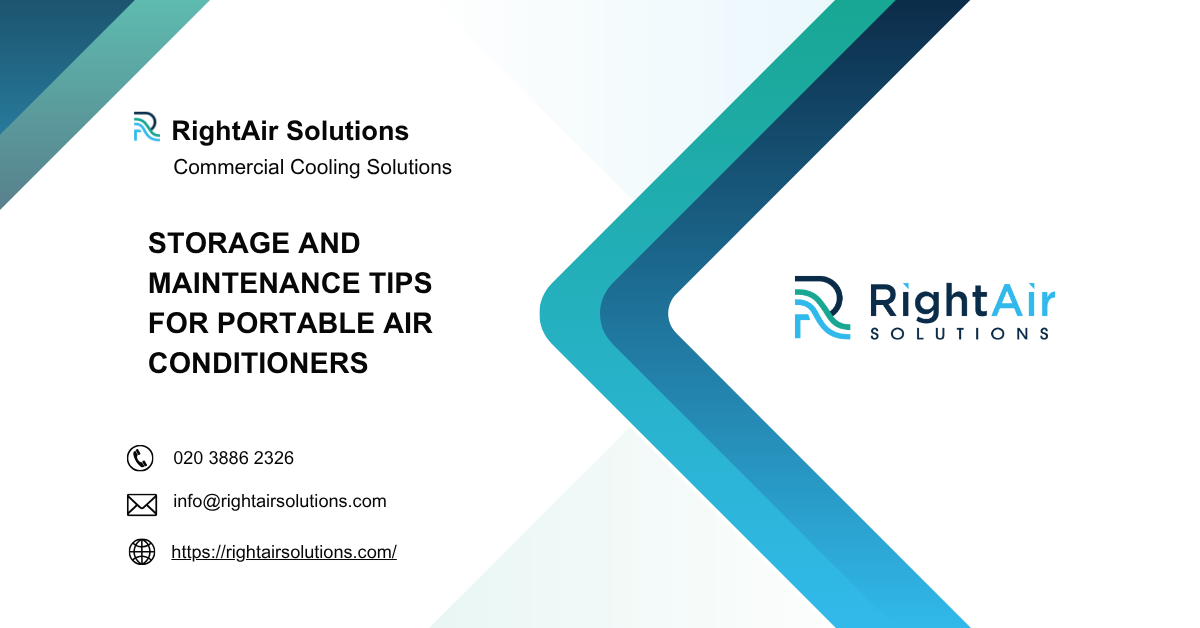
Ultimate Guide: Portable Air Conditioners in 2025
Wondering if portable air conditioners are worth it in 2025? Discover surprising benefits, smart tech insights, and energy saving tips you’ll love.
RightAir Solutions is a company that specialises in commercial air conditioning services.
Looking after a portable air conditioning system is straightforward with regular care. Cleaning components like the air filter, evaporator coil, and exhaust hose, along with storing it properly during cooler months, helps maintain its performance and lifespan. Whether you own a mobile single duct AC or a dual hose cooling appliance, these tips help keep it in top condition and ready for the next heatwave.
After several months in storage, check the air intake grille, HEPA filter, and evaporator fins for dust and build-up. A quick clean with a hoover or soft brush improves energy efficiency and airflow. Ensure the directional louvers and fan blades move freely.
If the appliance was stored on its side, stand it upright for eight hours to allow the compressor oil to return to its normal position. This avoids damage to internal components when you switch it on.
Use a mixture of distilled white vinegar and warm water to wipe internal and external surfaces. Add a few drops of tea tree or eucalyptus oil to the filter area if desired. Then run fan-only mode for a few hours to dry out the interior and avoid bacterial growth in the drainage pan or hose.
Hang a cotton sheet across a hallway or room entrance to trap cool air inside a smaller zone. This method is especially useful in open-plan homes or larger rooms where cool air can escape easily. It lightens the load on your AC and speeds up cooling.
Pro Tip: Wipe the condenser coil monthly with a soft brush to keep cooling performance sharp and reduce compressor strain.
Keep the air conditioning unit near a window for quick access to an exhaust point. Make sure there’s at least 60 centimetres clearance on all sides to ensure proper air circulation and cooling efficiency. Avoid placing the unit in direct sunlight or next to household appliances that give off heat, such as tumble dryers.
Most portable cooling systems come with vent kits for sash windows, which are uncommon in many UK homes. Instead, use a clear acrylic sheet or PVC board cut to fit your window opening, then create a snug circle for the exhaust hose. Fix it in place with insulation tape to prevent air leaks.
Painted plywood panels not only fit well but can reflect sunlight, keeping the room cooler. These also make the setup look cleaner if you’re leaving it in place for the season.
If your room lacks a suitable window, you can vent through alternative exits like a dryer vent, pet door, or wall opening fitted with a vent cap. Just make sure the route leads directly outside to avoid hot air cycling back in. Always follow the manufacturer’s safety guidance, especially for models using R290 refrigerant.
Set your room air conditioner to a temperature between 22 and 24 degrees Celsius. This keeps your room comfortable without using unnecessary electricity. Lower settings won’t cool the room faster and may stress the compressor.
Use high fan speed for better airflow in larger rooms. Keep curtains closed during the day to block direct sun, and shut all windows and doors when the unit is running to maintain cooling efficiency.
Use features like sleep mode or the programmable timer to prevent overuse. If your appliance includes inverter technology, it adjusts cooling output to match the ambient temperature, saving energy over long periods.
Clean the dust filter weekly to maintain peak airflow. Replace filters when they become worn, especially if your system uses a carbon or HEPA filtration component. For more advice, check out our energy efficient appliances page.
Pro Tip: Use a cotton sheet partition to trap cool air in the room you’re using—it speeds up cooling and cuts electricity costs.
Clean the mesh air filters every two weeks. Rinse with lukewarm water and allow them to dry completely before replacing. In homes with pets or where pollen levels are high, check the filters more frequently.
Inspect the flexible exhaust hose and plastic duct connectors for wear or blockages. Use a hoover nozzle to remove dust and lint. Damaged vent ducts can affect the unit’s ability to remove warm air from the room efficiently.
Monthly coil cleaning is also worth adding. Gently brush the condenser coils at the back of the unit to improve heat exchange and reduce pressure on the compressor. This simple task can enhance cooling performance and extend lifespan.
Watch out for error codes on the digital control panel, as these can indicate sensor faults or water tank issues. Poor airflow, unusual vibrations, or increased humidity may suggest blocked filters or internal leaks. Deal with minor problems quickly to avoid larger repairs later.
Use a non-corrosive antibacterial spray to clean interior vents and then run the fan mode to dry it thoroughly.
Before storing, remove all water from the drainage system using the outlet valve or hose connection. Run fan mode for a few hours to dry internal components. Wipe down the exterior, and clean filters before storing them separately in a clean dry bag.
Wrap the exhaust hose in a towel or fabric sleeve to prevent dust build-up and keep connectors protected. Keep the air conditioning unit upright and store it in a dry space like a cupboard or under-stairs area. Avoid garages and sheds as moisture can corrode the circuit board and motor components.
If you only need cooling for a short period, consider hiring a portable unit. Some UK companies offer flexible rates for summer rentals. Buying can be cost-effective for repeat use but comes with maintenance and storage responsibilities. Either way, make sure to clean the filters before returning a hired unit to avoid extra fees.
At the start of the next warm season, inspect the refrigerant hose, intake filter, and window seal. Replace any parts that are cracked or worn. Plug it in and test cooling output before the next heatwave arrives. For more home appliance planning, refer to our seasonal appliance maintenance checklist.
Clean the air filter every two weeks during regular use. For dusty areas or homes with pets, check weekly. A clean filter ensures good airflow and improves the unit’s ability to cool effectively.
It’s not recommended. Garages and sheds often have high moisture levels, which can damage electronic parts or lead to rust. Store the unit indoors in a dry and upright position.
These are error codes. E5 usually refers to a water tank that needs emptying, while P1 can indicate high humidity levels or a fault with the drainage system. Refer to your product manual for the specific meaning.
Portable air conditioning systems are a great solution for cooling single rooms or small spaces, especially during unexpected heatwaves. Regular cleaning, seasonal checks, and proper storage keep them reliable and energy efficient. These easy steps help your AC work at its best when you need it most.
If you’re unsure which type of portable air conditioner suits your home or budget, this buying guide from Which? breaks down the key features, costs, and room-size matches in a way that’s easy to understand.

Ultimate Guide: Portable Air Conditioners in 2025
Wondering if portable air conditioners are worth it in 2025? Discover surprising benefits, smart tech insights, and energy saving tips you’ll love.

Portable ACs for Server Room Emergencies
Avoid costly downtime with portable ACs for server rooms. Discover simple steps to keep your IT systems cool when emergencies strike.

Storage and Maintenance Tips for Portable Air Conditioners
Think cleaning the filter is enough? Here’s what most people miss—and how to make your portable AC last longer, cool faster, and save energy.
RightAir Solutions

At RightAir Solutions, we provide air conditioning services to domestic and business customers for heating and cooling units. We also supply and fit commercial AC and HVAC services with our insured, qualified and experienced London team of air con engineers.